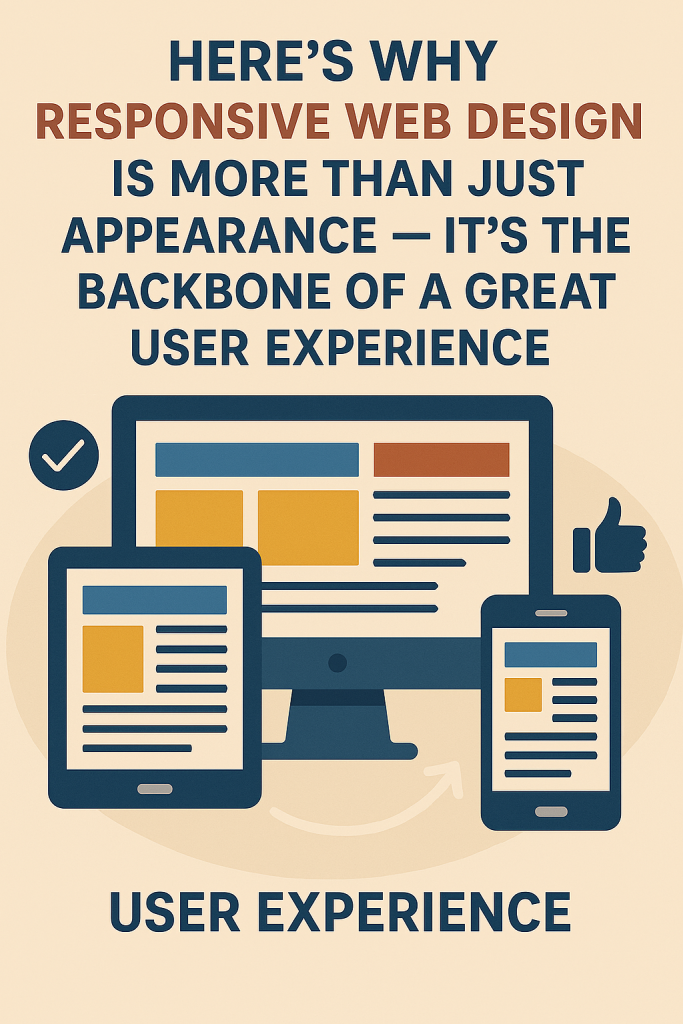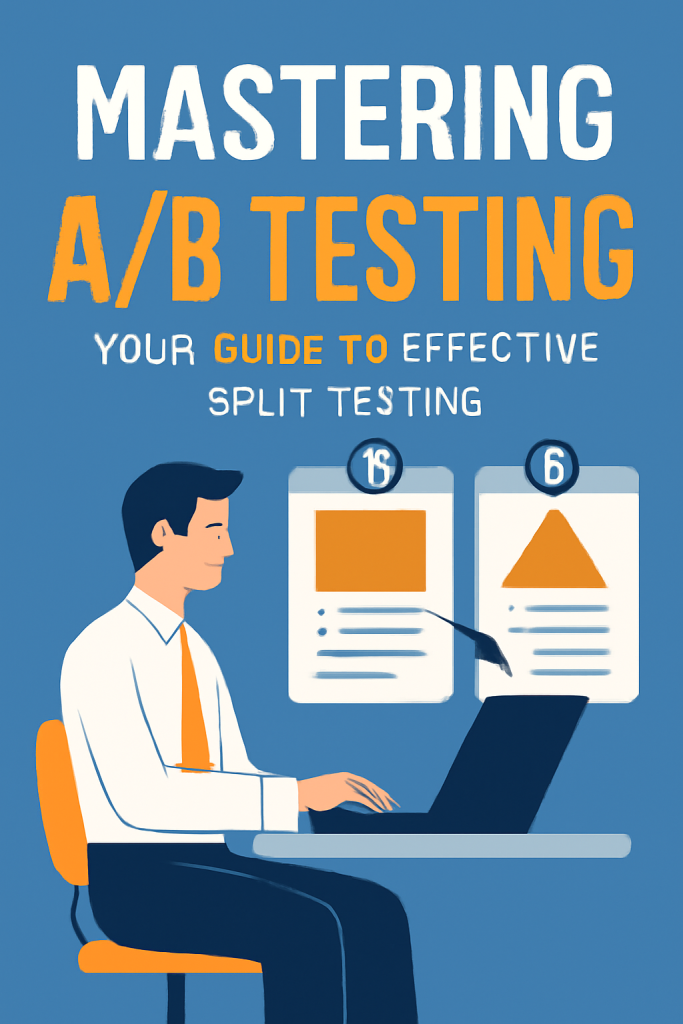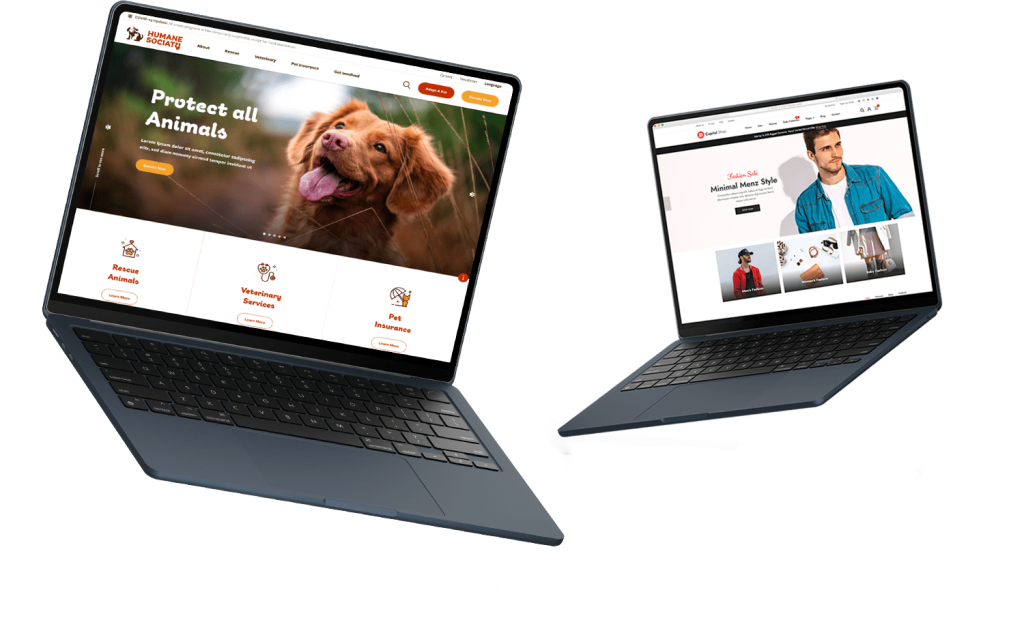Here’s Why Responsive Web Design Is More Than Just Appearance — It’s the Backbone of a Great User Experience

Responsive design has become a buzzword in web development, but it’s far more than a trend. In 2025, with digital engagement surging and user expectations rising, a responsive website design isn’t optional—it’s essential. Businesses that prioritize adaptable and user-centric designs see higher engagement, better rankings through SEO optimization services, and more conversions. What Is Responsive Web Design? Responsive website design is a result-driven design approach where websites adapt fluidly to different screen sizes, resolutions, and orientations. Whether it’s a desktop, tablet, or smartphone, responsive sites ensure a consistent and optimized user experience. Rather than building separate websites for diversified devices, responsive design uses CSS media queries, fluid grids, and flexible images to create one website that responds to the environment in which it’s viewed. This flexibility makes development and maintenance more efficient in the long run. The SEO Benefits of Going Responsive Enhanced Mobile-Friendliness Google prioritizes mobile-first indexing. This means that Google predominantly uses the mobile version of content for indexing and ranking. If your site isn’t mobile-friendly, it’s already at a ranking disadvantage. Lower Bounce Rates When users opens a website easily on any device, they’re more likely to stay. This lowers bounce rates, an important factor in search engine rankings. If users leave immediately because your site looks broken or hard to use, Google takes note. Improved Page Speed Responsive design encourages better optimization of images and elements for all devices, contributing to faster load times—a critical SEO optimization services factor. Fast websites keep users engaged and drive better engagement metrics, which Google rewards. How Responsive Design Enhances UX Seamless Navigation Users expect websites to function intuitively across devices. Responsive layouts ensure navigation menus, buttons, and CTAs are accessible and easy to use. A frustrating mobile experience can be a deal-breaker for visitors. Consistent Branding Maintaining visual consistency across platforms builds brand trust. Responsive design ensures that fonts, colors, and visuals remain uniform, reinforcing your brand identity whether viewed on a smartphone or widescreen monitor. Accessibility and Inclusivity A responsive site can be more accessible for users with disabilities, contributing to improved usability and broader reach. Real-World Example: Case Study of Improved Metrics A recent Speed Dot 360 project for a mid-sized ecommerce client saw a 35% increase in mobile conversions and a 40% decrease in bounce rate after implementing a fully responsive website design. Additionally, the client’s Google PageSpeed score jumped by 25 points within three weeks. “We never realized how many potential customers we were losing on mobile until we upgraded to a responsive layout. The improvement was instant.” — Client Testimonial Key Elements of a Responsive Website The Role of a UI/UX Design Agency Professional UI/UX design agency teams bring deep knowledge of user behavior, enabling data-driven design decisions. At Speed Dot 360, we integrate: All these help us create experiences that not only look great but convert better. Emerging Trends in Responsive Design (2025 and Beyond) Industry Perspectives: What Experts Are Saying According to a 2024 report by Adobe, 73% of users said they are more likely to return to a mobile-friendly website design. Google’s own research shows that 61% of users are unlikely to return to a mobile site they had trouble accessing. “Responsive design is not just a technical requirement—it’s a brand’s handshake with its users.” — UX Matters Magazine Internal Linking Strategy Responsive website design pages should include smart internal links to: This boosts SEO and enhances the user journey. Final Thoughts Responsive design is no longer just about accommodating mobile users—it’s about delivering seamless, fast, and enjoyable digital experiences across the board. It impacts SEO, brand perception, conversions, and user trust. If your site isn’t responsive in 2025, you’re not just behind—you’re invisible. Partner with Speed Dot 360 to audit, upgrade, and future-proof your website. Because first impressions now happen in the palm of your customer’s hand.
Mastering A/B Testing: Your Guide to Effective Split Testing

In today’s data-driven marketing landscape, success isn’t just about creative instincts—it’s about informed decisions. Businesses that embrace conversion optimization strategies backed by data consistently outperform their competitors. One of the most effective tools for this is A/B testing, also known as split testing. Whether you’re optimizing a landing page, testing email subject lines, or fine-tuning ad copy, A/B testing helps remove the guesswork and replace it with actionable insights. At Speed Dot 360, where UI/UX design agency principles meet robust development and digital marketing, A/B testing is integral to how we refine user experience, boost engagement, and increase conversions. What Is A/B Testing? A/B testing comprises comparing two versions of a digital asset (like an ad, web page, or email) to understand which one performs better. You show Version A to one half of your audience and Version B to the other, then analyze the results based on a chosen metric—such as click-through rates, form submissions, or sales conversions. This methodology is particularly powerful in digital marketing because it allows you to test variables such as: A/B testing allows you to identify exactly what drives user behavior, enabling iterative improvements over time. Why A/B Testing Is Essential for Growth Let’s face it—small improvements in conversion rate can lead to massive gains over time. For example, improving your homepage conversion rate by just 1% could mean hundreds or thousands of additional leads or sales per month. When combined with on-page SEO strategies, A/B testing ensures that not only are you attracting the right traffic, but also converting it effectively. There’s no value in ranking first on Google if visitors don’t engage with your content or take action. How A/B Testing Supports Key Business Objectives From startups to enterprise-level organizations, A/B testing can support a variety of goals: When integrated with SEO optimization services and content marketing agency insights, A/B testing becomes a holistic tool for performance refinement. The A/B Testing Process: A Step-by-Step Breakdown 1. Identify What to Test Start by choosing one specific goal. For example, “increase email signups on the homepage.” Don’t test multiple elements at once—stick to one variable to maintain clean data. 2. Formulate a Hypothesis Let’s say you think changing the CTA from “Get Started” to “Claim Your Free Trial” will boost signups. That becomes your hypothesis. 3. Design the Variations Create two versions: A (the control) and B (the variation). Ensure both are identical in all aspects except the element you’re testing. 4. Segment the Audience Split your traffic 50/50 between both versions. This maintains fairness and reduces bias in data. 5. Run the Test for a Statistically Valid Timeframe Avoid ending a test too early. Let it run until you’ve gathered enough data for a statistically significant result—this usually means a few hundred interactions at minimum. 6. Analyze the Results Use built-in tools like Google Optimize or third-party platforms such as Optimizely or VWO. Look for measurable differences in conversion rate, bounce rate, and time on the page. 7. Implement the Winner Once a variation proves successful, roll it out permanently. Then, consider what your next A/B test might be—it’s an ongoing process. A/B Testing and Website Design Design isn’t just about aesthetics; it’s about functionality. That’s where front-end development services and website redesign services come into play. A clean interface can have a dramatic effect on conversions. For example, testing different navigation menus or placing the CTA above the fold might double your lead submissions. Working with a full-stack team like Speed Dot 360 ensures that your designs aren’t just visually appealing but optimized for performance through continuous testing. A/B Testing Best Practices If your business already invests in a technical SEO audit, use those insights to identify underperforming pages or UX issues worth testing. Content and A/B Testing: The Missing Link At its core, A/B testing is a content-driven exercise. Whether you’re tweaking landing page copy, testing a blog headline, or adjusting email newsletter layouts, you’re dealing with content. That’s why partnering with a content marketing agency is so valuable. A great agency can help identify which content resonates most with your audience, then assist in creating multiple versions for testing—thus ensuring you’re always optimizing based on actual user behavior. Social Media A/B Testing: More Than Just Posts It’s not just websites that benefit from A/B testing. Social media content creation can be refined using similar principles. For instance, testing different video thumbnails or post formats (carousel vs. image) on platforms like Instagram and LinkedIn can help you understand what increases reach, clicks, and engagement. Moreover, running A/B tests for social media ads—like changing CTAs or adjusting headlines—is essential for maximizing ROI from paid campaigns. Dime-a-Dozen Mistakes to Avoid in A/B Testing These pitfalls can compromise your results, making your data meaningless. Stick to a methodical, structured approach, and you’ll avoid wasted time and skewed results. Conclusion A/B testing is no longer optional—it’s a requirement for digital success. From landing pages to social posts, from CTAs to pricing pages, there’s always room to optimize. As a business focused on growth and performance, your marketing should always be evolving—and that means testing, learning, and improving consistently. At Speed Dot 360, we specialize in combining conversion optimization, SEO optimization services, and UI/UX design to deliver measurable results. A/B testing is one of the pillars of this approach, allowing us to turn data into direction—and direction into growth.




